A quick summary of our findings in 2024 (TL;DR):
- The average Google Ads budget our clients ran per month was $567.69 per month.
- You should double your average spend in April but cut it in half after May.
- More money does not equal more leads. Pay attention to search demand. It peaks in April (NOT March) and valleys in December.
See a more condensed version of these findings in Green Industry Pros Magazine.
Table of Contents
- Overall Google Ads Performance
- How Much Should You Spend on Google Ads by Month
- How Your Google Ads Budget Affects Performance
- What to Expect for Impressions, Clicks, and Leads with Your Google Ads Budget
- Takeaways
This is our fifth consecutive year reporting on Google Ads metrics for landscaping and lawn care businesses. Over the years, we’ve sliced the data in multiple ways to find the most helpful information.
In 2020, we focused on the basic metrics, device types, and how COVID affected search traffic.
In 2021, we dove into search volume and intent by month.
In 2022, we looked at the best time of day, day of the week, and month of the year to run ads.
In 2023, we really looked at how ads performed in different zones on an annual average.
This year, we want to talk about average monthly Google Ads budgets. Specifically, how much should you spend each month and what you can expect as a result. Being in a seasonal industry, your budget should vary from month to month. The demand isn’t as high in July as it was in April — your budget should reflect that.
Spending too little on Google Ads won’t get you any leads. Spending too much will inflate your cost-per-click. This analysis is to show you where, how, and when the average landscaping and lawn care company spends its money on Google Ads.
Overall Google Ads Performance
Here are the standard Google Ads performance metrics in 2024 vs 2023. Except with this year’s budget analysis at the bottom.
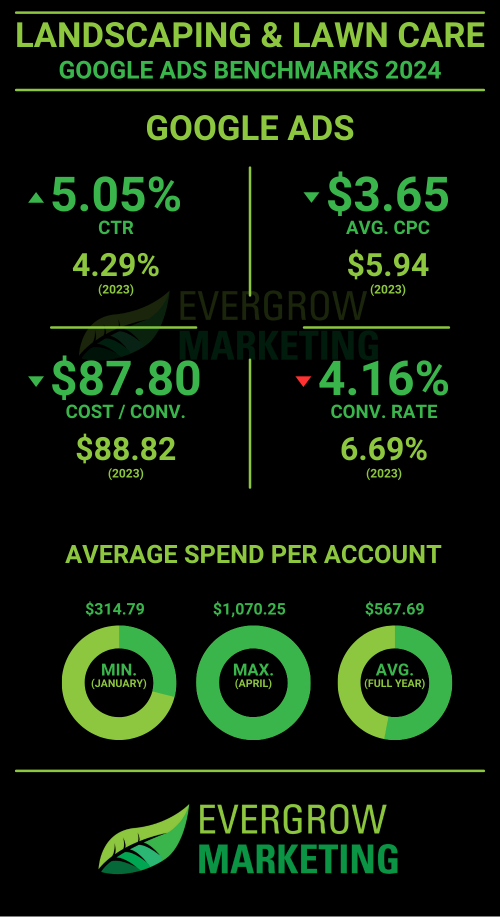
Keep in mind that the metrics below and their changes from last year are aggregated from all of our landscaping and lawn care clients from the work that we do for them. These metrics are gathered across 61 accounts spending a combined total of more than $225,000 in 2024.
Landscaping and lawn care Google Ads averages for 2024:
- 5.05% Click-through-rate (CTR)
- $3.65 Cost-per-click (CPC)
- $87.80 Cost-per-lead (cost-per-acquisition / CPA)
- 4.16% Conversion Rate (CVR)
Average Google Ads budget for landscaping and lawn care businesses:
- $567.69 per month
Important things to point out:
- Ads got cheaper and more people clicked on the ads.
- The conversion rate (the number of leads our clients got divided by the number of clicks they got) dropped by a lot.
I’ll save you the boring details about why we think ads got cheaper and we got more clicks — but Cody made a LinkedIn post about a big discovery we made back in April of 2024.
The only explanation we have for the conversion rate drop is due to it being an election year. People are willing to research for free but not pull the trigger on anything. We heard it from all of our clients. Their customers said they were getting quotes but wanted to hold off to see what the economy does.
This is also the first year we have given actual budget numbers. The minimum average monthly budget is around $300/mo (January) while the maximum is just over $1,000/mo (April). Anywhere between or after those months, the average lawn care or landscaping business spends between $500 and $600/mo.
So if you’re wondering where your budget should be, those are some good guidelines.
How Much Should You Spend on Google Ads Per Month?
Our averages are good numbers to base things on, but there are a few important details to keep in mind that could skew the recommendation for you:
- Whatever our clients are spending is not always our recommendation. There may be room for an increased budget but it may not be in our client’s budget or they cannot take on more work.
- We only run ads on Google Search. This means when we set up our clients’ Google Ads, we turn off Display and the Search Partners Network. If you keep Display on, your recommended budget could in theory be limitless.
- We use Phrase Match keywords only. If you use Broad Match keywords (Google’s default), your budget could also be limitless because you’ll show up for completely unrelated searches.
For more information on the keywords you should target before determining a budget, check out this post we made about which landscaping keywords you should target. That covers both SEO and PPC. You can follow that one up with this one about how we run Google Ads for our clients. This one is more specific to just Google Ads setup.
On average, a typical client was spending between $500 and $600/mo on Google Ads per month. However, even given the information above, there are still a lot of things that affect how much you can actually spend such as:
- Seasonality
- Climate zone
- Number of services you offer and are promoting
- Geography and population
- Geographic affluence
- etc
Our general rule of thumb is that if your target area has a population of less than 100,000, you shouldn’t be spending much more than $300/mo ($10/day). It also means that you should probably just run your own Google Ads because stacking an agency’s management fee on top of that isn’t going to make your cost per lead worth it for that small of an area.
If you serve a larger metro like Chicago, you can have a budget of $5,000 or more in peak seasons (March – June). We have a client that does only organic lawn care and landscaping in the Chicago metro and their ad spend tops out around $3,000 in the peak season. Any higher and our CPCs skyrocket and there’s no sense in paying more per click if it causes the price of the lead to increase as well.
Average Google Ad Spend for Landscapers by Month
We analyzed the average spend of all 61 of our clients in 2024 and this is where the trends (and search volumes) lie.
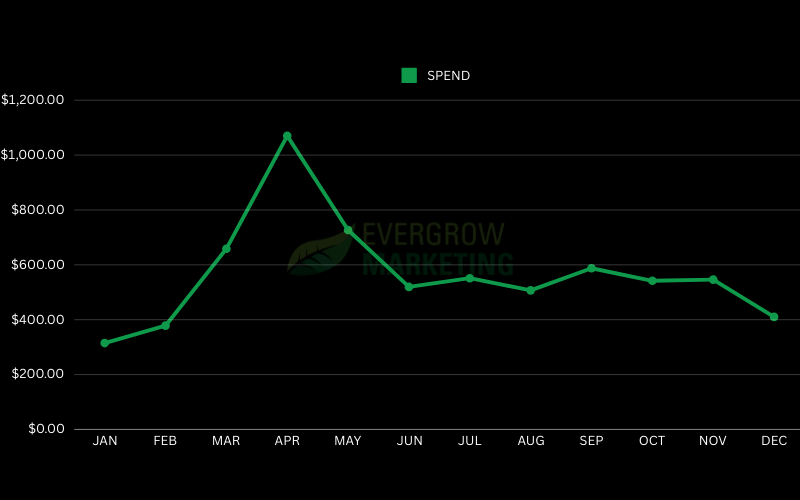
- January: $314.79 (Min.)
- February: $378.21
- March: $658.45
- April: $1,070.25 (Max.)
- May: $727.10
- June: $519.44
- July: $551.27
- August: $506.96
- September: $587.54
- October: $541.77
- November: $546.20
- December: $410.27
As the season starts in Q1, people want to raise their budget in March, but the real search volume comes in April. That’s where you want to put all of your money. Not March. April. You can likely hang onto that maximum budget through May, but we would recommend cutting it in half by June.
Another thing you might notice is that December and January still have budgets over $300. Some of our clients simply don’t run ads in these months. We shut everything down because they don’t offer Christmas light installations and they don’t do snow or tree removal.
If cash flow is tight, I recommend shutting things down.
But keep in mind, that around late November and in December, your competitors are sending out their annual renewal letters for lawn care. If people are unhappy or want to switch, they may turn to Google and if you shut your ads down, that’s just less visibility for annual customers who may want to switch to you in the off-season and get on your spring schedule.
The winter is also a time for commercial accounts to assess their fiscal budgets and look for other providers. So although I recommend shutting the ads down in the winter if cashflow is tight, I don’t recommend doing so if the money is already allocated to marketing — I would simply suggest doing a minimum of $5 – $7/day to keep the ads up and running for anyone who may be searching.
It’s important your budget matches the market demand!
How Your Google Ads Budget Affects Performance
First, let’s take a look at the average cost-per-lead our clients received based on their budgets over the year. Keep in mind, that these metrics are only attained by the way I stated we set up our Google Ads accounts with phrase matching and the additional settings turned off.
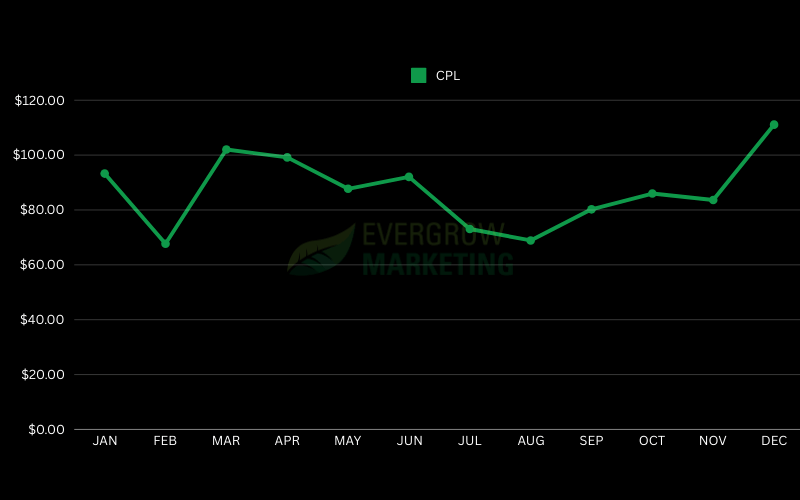
- January: $93.27
- February: $67.68
- March: $102.04
- April: $99.17
- May: $87.72
- June: $92.06
- July: $73.07
- August: $68.89
- September: $80.24
- October: $86.00
- November: $83.63
- December: $111.11
Even though the majority of searches and the most opportunity is in April, our lowest cost-per-lead is actually in February where there is much lower search volume. This is usually due to higher visibility as competitors aren’t turning their ads on yet.
Now let’s look at the conversion rate by month. This tells us how engaged searchers are and if they’re just shopping around or if they’re serious about hiring someone.
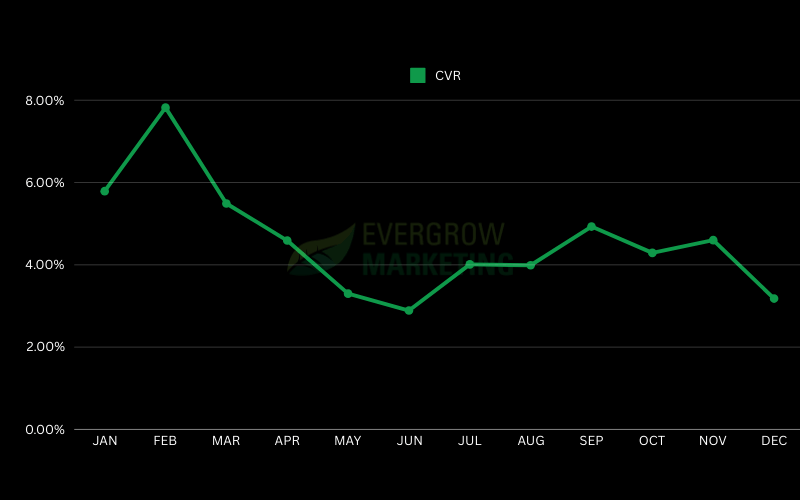
- January: 5.79%
- February: 7.82%
- March: 5.49%
- April: 4.59%
- May: 3.30%
- June: 2.89%
- July: 4.01%
- August: 3.99%
- September: 4.93%
- October: 4.29%
- November: 4.60%
- December: 3.18%
In this chart, it shows that the conversion rate is much higher during the off-season. Why is that? The search volume is much lower than in March.
It’s a mixture of two things:
- There are more competitors to choose from during the on-season. More people running ads means fewer conversions for you.
- The people who are searching in the off-season are serious. They weren’t influenced by the weather, this is a project or a decision they have been thinking about for a while and they’re looking for a serious professional.
The second point is an educated guess, but maybe you can draw from your own experience with customers who reach out in the off-season versus the on-season rather than take my word for it.
Now let’s lay all of these graphs together including the average spend per month.
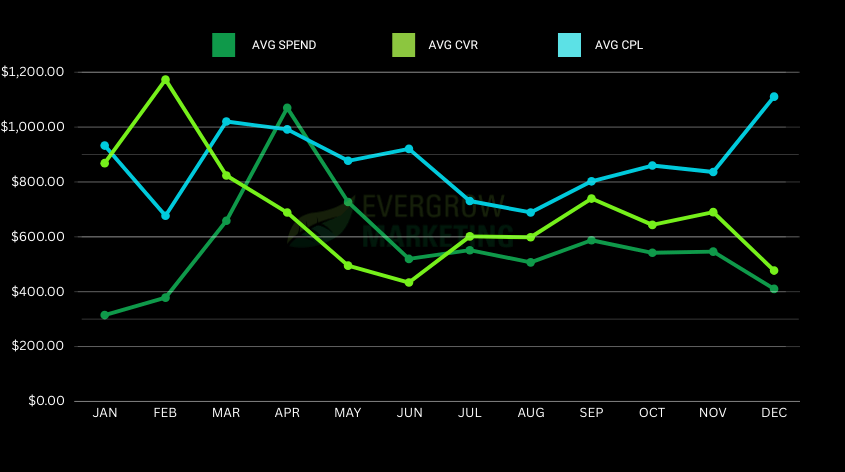
There are four points that stick out to me the most:
- February: Spend is low but the cost per lead is also the lowest and the conversion rate is the highest. February is a good month to run a small budget in Google Ads.
- However, that doesn’t mean you can dump all of your money into February. The volume just isn’t there.
- April: Ramp up your ad spend, a lot. This is when people are actually searching. But don’t expect better conversion rates or lower costs per lead. This is your chance to pick up the most accounts at a reasonable rate.
- June: Drop your budget. Cut it in half. The volume decreases but you can maintain better costs-per-lead than April at half the budget.
- December: This is the best time to just shut down ads if you don’t do Christmas light installs or snow removal. Everyone is thinking about the holidays and costs per lead are super high.
What to Expect for Impressions, Clicks, and Leads with Your Google Ads Budget
Conversion rate and cost-per-lead is great, but let’s talk about raw numbers. How many impressions, clicks, and leads are we looking at based on the average budget spends?
I’m glad you asked. I put all of this together for you.
Starting with impressions.
Impressions by Month
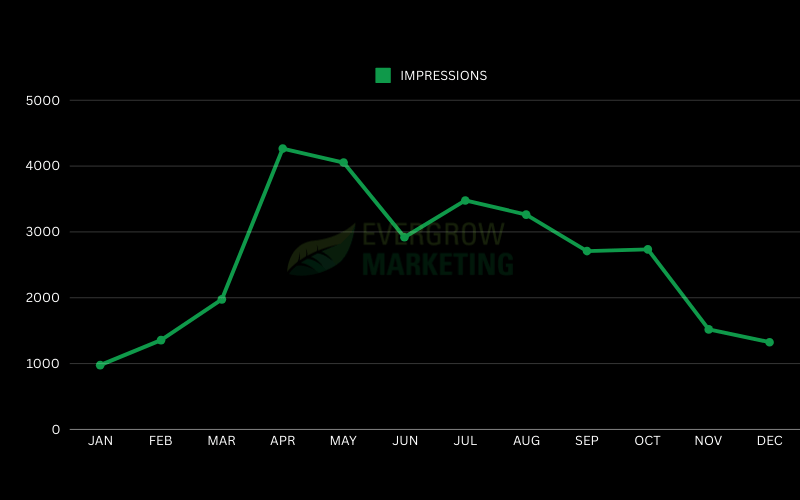
- January: 976
- February: 1,356
- March: 1,976
- April: 4,266
- May: 4,054
- June: 2,919
- July: 3,478
- August: 3,263
- September: 3,709
- October: 2,735
- November: 1,519
- December: 1,325
Clicks by Month
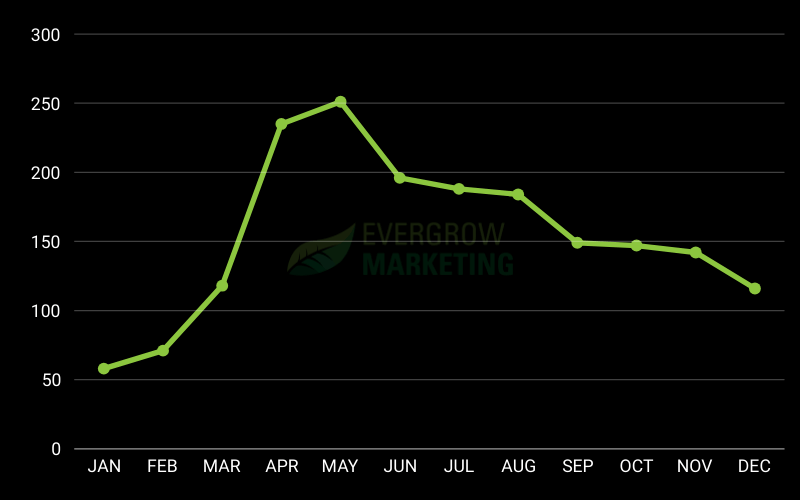
- January: 58
- February: 71
- March: 118
- April: 235
- May: 251
- June: 196
- July: 188
- August: 184
- September: 149
- October: 147
- November: 142
- December: 116
Leads by Month
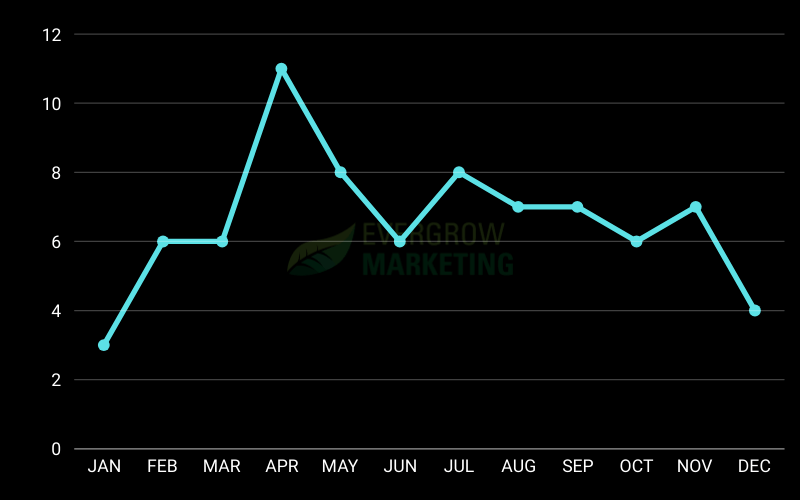
- January: 2
- February: 6
- March: 6
- April: 11
- May: 8
- June: 6
- July: 8
- August: 7
- September: 7
- October: 6
- November: 7
- December: 4
How Google Ads Budgets Affect Impressions, Clicks, and Leads
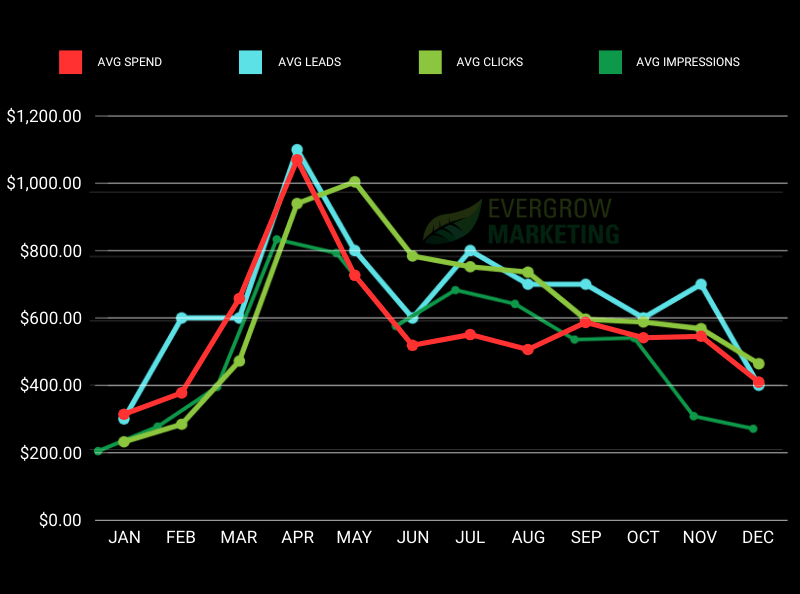
This is a lot to look at so let me point out a few things that jump out.
- April: The average spend is the highest and therefore we see the highest number of impressions and leads. This makes sense. The search volume is there so you should capitalize on it.
- May: Remember, this is where we reduce our budget by half… but look, the amount of impressions is virtually the same and the number of clicks is even higher. We’re getting more clicks at half the cost.
The rest of the graph makes sense. You want to spend less money when the demand isn’t there and more money when it is.
If this data solely reflected spend and disregarded market demand, we wouldn’t be seeing more clicks and the same number of impressions in May as in April with half the budget. That’s not demand, that’s being smart with ad dollars.
What to Take Away From This
You should have three Google Ads budgets.
- You should have a minimum for December – February.
- You should have a maximum for March – May.
- You should have an average for June – November.
If you have any questions about Google Ads or need a second opinion, feel free to reach out to us at contact@evergrowmarketing.com.

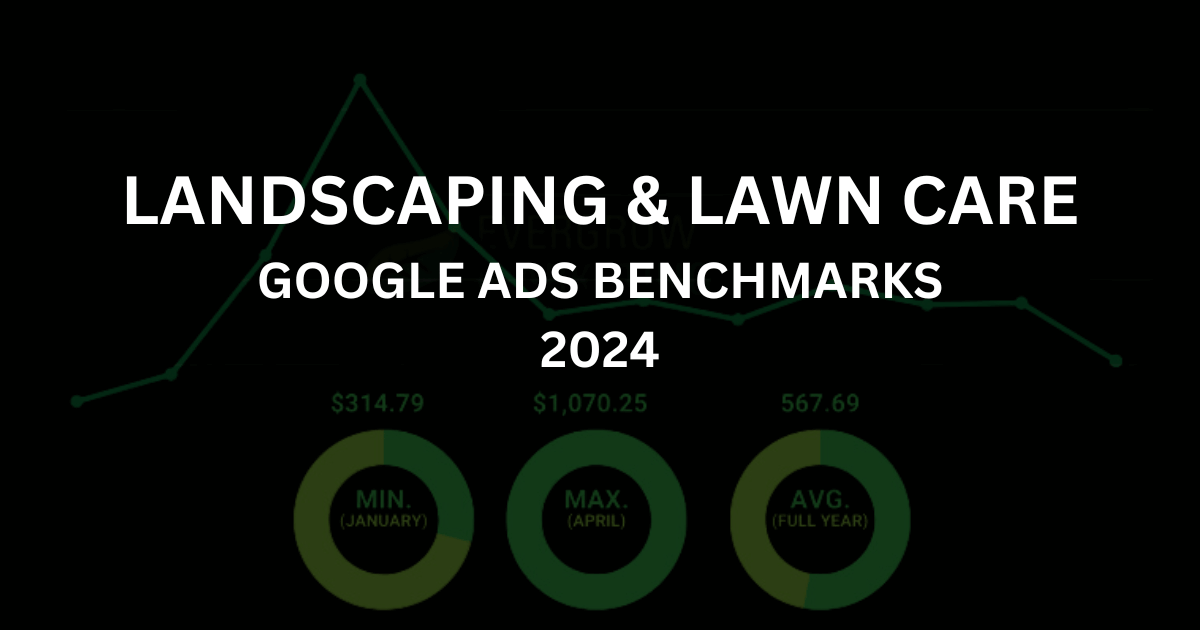
0 Comments